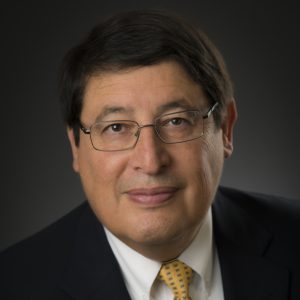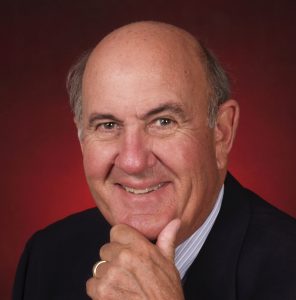Writer: Jerrica DuBois
 3 min read January 2024 — Construction recently broke ground on San Antonio’s latest medical facility, Palo Alto Hospital, another milestone for one of the region’s fastest-growing industries.
3 min read January 2024 — Construction recently broke ground on San Antonio’s latest medical facility, Palo Alto Hospital, another milestone for one of the region’s fastest-growing industries.
Scheduled to open in 2027, the University Health facility is expected to create greater access and alleviate healthcare needs in the underserved South Side and will feature 166 beds and 24-hour services including, emergency care, a labor and delivery unit, operating rooms, and radiology and lab services. University Health, which opened a Women’s & Children’s Hospital in December 2023, is also scheduled to begin construction on a multi-specialty healthcare center to open in 2026.
To gather more insights into the booming growth of San Antonio’s healthcare industry, Invest: sat down with George Hernández, president and CEO of University Health, and Jim Reed, president of the San Antonio Medical Foundation. They shared their views on the current state of healthcare, initiatives and projects that give back to the community, and what is coming down the pipeline that may impact the sector.
What is your analysis of the current state of the healthcare sector in San Antonio?
 George Hernández: The health systems in San Antonio are very collaborative when it comes to emergency response or solving community concerns. A great example of this collaboration is our work through STRAC, which is our South Texas Regional Advisory Council. Initially, STRAC focused exclusively on bringing hospitals and EMS agencies together to coordinate care for trauma patients, but now this work has expanded to many different health services such as heart, maternity and mental health care. Together, we have really driven that collaboration and a joint commitment to continual improvement at a big system level because we all are here to serve and care for this community.
George Hernández: The health systems in San Antonio are very collaborative when it comes to emergency response or solving community concerns. A great example of this collaboration is our work through STRAC, which is our South Texas Regional Advisory Council. Initially, STRAC focused exclusively on bringing hospitals and EMS agencies together to coordinate care for trauma patients, but now this work has expanded to many different health services such as heart, maternity and mental health care. Together, we have really driven that collaboration and a joint commitment to continual improvement at a big system level because we all are here to serve and care for this community.
I am really proud to say our San Antonio health systems have a long history of working together to solve community health issues. I speak to a lot of health leaders across the state and country and I routinely hear that this is not the case in other cities. It’s important for our community to know that hospitals regularly compete for patients and health professionals. However, when there is a crisis, our hospitals, along the city of San Antonio, Bexar County leaders and STRAC, have proven time and time again that we can come together and do an excellent job.
 Jim Reed: Healthcare in San Antonio is close to exploding. An economic impact study of the South Texas Medical Center showed that healthcare is growing both in terms of revenue and geographically. Not only San Antonio but the region as a whole is experiencing growth. An example of that is that the South Texas Medical Center now harbors the largest Veterans Association (VA) hospital by number of patients in the United States. We are also seeing major growth in other healthcare categories, such as inpatient, outpatient, research and biomed, at a pace that we have never seen before. We have six major institutions at the center: University of Texas Health San Antonio (UT Health SA), University Health (UH), the VA, Methodist Hospitals, St. Luke’s Baptist Hospital, and CHRISTUS Santa Rosa Medical Center Hospital. Each of these institutions is either growing or in detailed stages of additional growth within the South Texas Medical Center.
Jim Reed: Healthcare in San Antonio is close to exploding. An economic impact study of the South Texas Medical Center showed that healthcare is growing both in terms of revenue and geographically. Not only San Antonio but the region as a whole is experiencing growth. An example of that is that the South Texas Medical Center now harbors the largest Veterans Association (VA) hospital by number of patients in the United States. We are also seeing major growth in other healthcare categories, such as inpatient, outpatient, research and biomed, at a pace that we have never seen before. We have six major institutions at the center: University of Texas Health San Antonio (UT Health SA), University Health (UH), the VA, Methodist Hospitals, St. Luke’s Baptist Hospital, and CHRISTUS Santa Rosa Medical Center Hospital. Each of these institutions is either growing or in detailed stages of additional growth within the South Texas Medical Center.
During COVID-19, the healthcare sector took a hit in clinical services and other areas because the sector was mainly focused on the pandemic. This, nevertheless, did not deter construction at the South Texas Medical Center. While there were some occasional hiccups due to supply chain issues, several projects, such as the Women’s and Children’s Tower at University Hospital and the Aging Clinic at UT Health SA, continued moving forward.
What initiatives and projects do you have in place to impact the community?
Hernández: The Hope Hits Harder Cancer Foundation has generously donated to the University Health Foundation to enable us to build a Child Life Center like no other in our new Women’s & Children’s Hospital. We will be moving all of our pediatric inpatient services, our children’s emergency department, as well as our maternity and gynecological inpatient services over into this beautiful new hospital that’s just under a million square feet. One of the features of the new hospital is expanded opportunities for us to make it a bit easier to be a kid in the hospital. Right now we have a pediatric unit on one floor, but there will be several floors in the new hospital dedicated to caring for children. The Hope Hits Harder Cancer Foundation Child Life Center is on the main level of the new hospital. There are a variety of activities they can do in this space such as a beautiful area for arts and crafts and a performance space, so we can have the Magic Theatre and other groups come to put on performances for the kids. There’s also some really cool gaming stations. My favorite part is the medical playroom. Through this grant from Hope Hits Harder, we’ve purchased child-sized replicas of some of the scary equipment that children may face when they’re in the hospital, like an MRI machine or an operating table. The Child Life specialists can bring the kids in that area and explain what’s going to happen, including some of the noises they might hear, and who the people are, so when they go to the operating room or the MRI, they feel a lot less anxiety.
Reed: The Foundation supplies the land and the different entities supply various capacities whether it is clinical, educational or research. Each of the major facilities of the San Antonio Medical Foundation has active plans to start or continue construction. UT Health SA, UH and the VA have different plans on how to use the land that the San Antonio Medical Foundation provides. For instance, UT Health SA has a hospital under construction that will provide primarily cancer treatment and other specialty care and will open in 2024. UH opened its Women and Children’s Tower in September 2023, which is a major addition.
One thing that the VA did around 10 years ago was move its outpatient facilities to separate locations from its inpatients, which enabled it to reduce congestion and offer better treatment and better service. The VA wants land to build more outpatient facilities and is in detailed planning of what those facilities will look like.
What are some legislative or regulatory issues that may significantly impact your operations?
Hernández: The biggest issue affecting us and all hospitals in Texas is the fact that we have a high percentage of uninsured and currently there is no comprehensive solution to address it. In Texas, healthcare for the uninsured is set up as a county issue, which means each of the state’s 254 counties have to solve the problem on their own. We have the highest percentage of uninsured in the country and spend a lot of time trying to create a funding stream that helps us resolve that issue.
We have a lot of uninsured patients from South Texas come to Bexar County for care. It’s critical for hospitals to have the resources needed to take care of people who are not part of our county and not eligible for our county program to provide access to affordable care. They come to Bexar County because they don’t have access to affordable care in their home county and they need care. That’s the dilemma for all hospitals in Texas, not just the San Antonio region, so we are working with our legislators to see how this issue can be addressed.
What AI initiatives or projects does the San Antonio Medical Foundation have in its pipeline?
Reed: One of the areas in which we are implementing AI into healthcare is in bringing people together for collaboration. On our bioscience website, sabioscience.org, we have a tool which allows users to scan and filter over 3,000 research projects by institution, disease or researcher. This serves as a recruiting tool to show what research is going on in San Antonio for potential healthcare candidates who can be recruited by UT Health SA, UH, Texas Biomedical Research Institute, Southwest Research Institute or other institutions. It also works as a tool for researchers to find other researchers who are working in the same area. We built this tool through our collaborative grants program.
For more information, visit:

